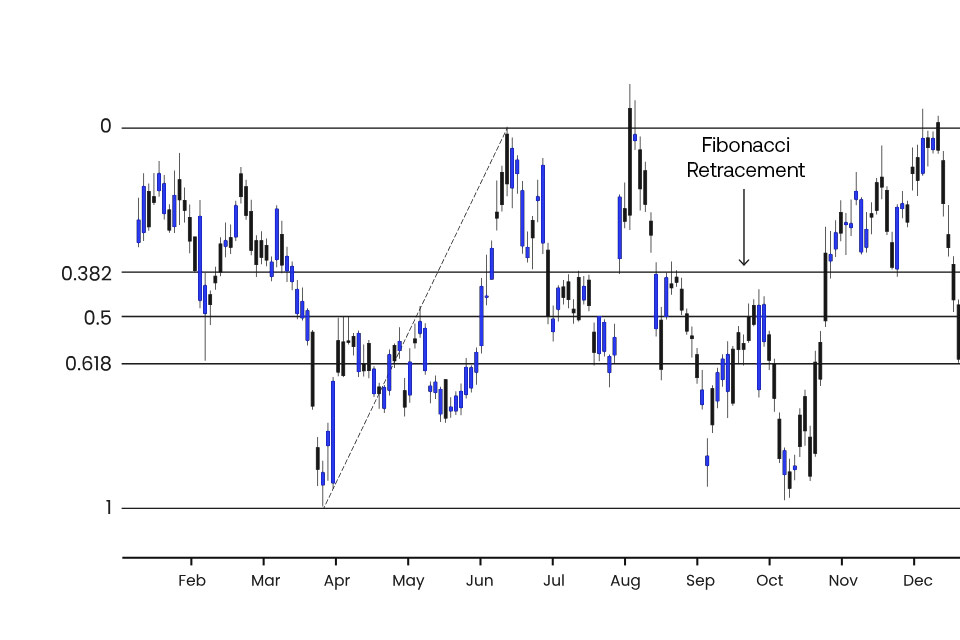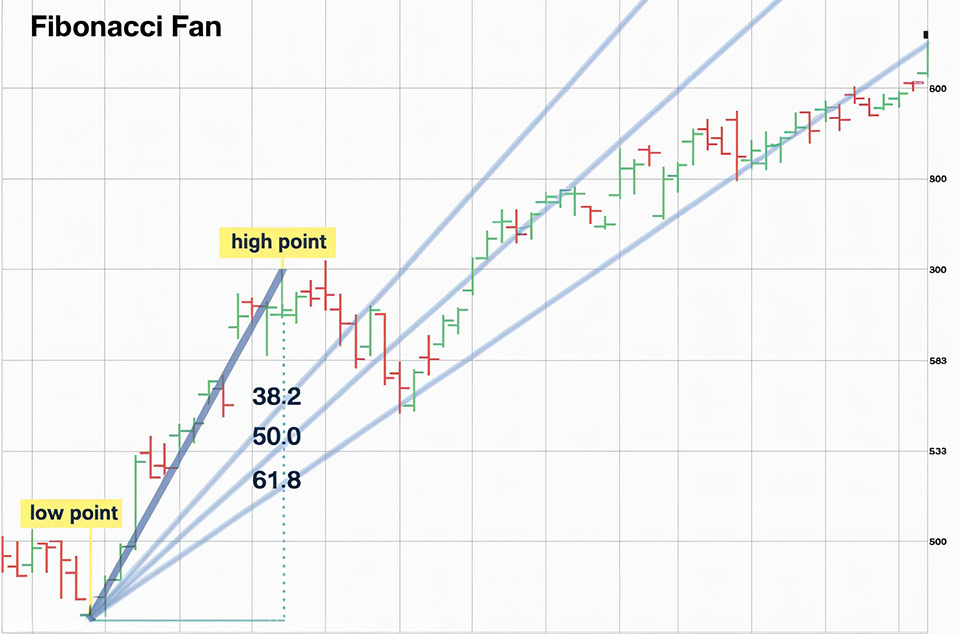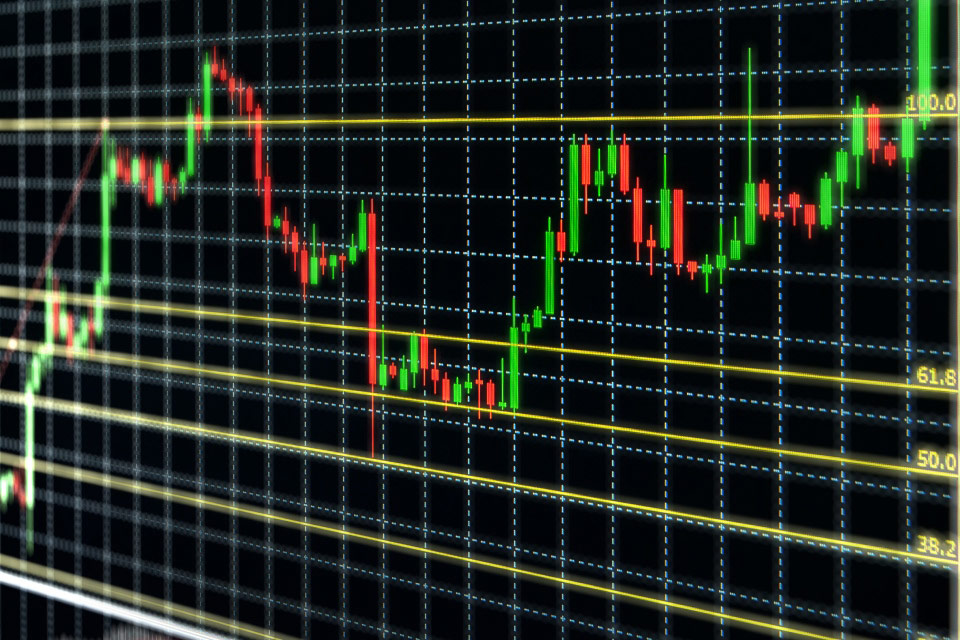Fibonacci retracements are one of the most popular methods for predicting currency prices in the Forex market. Predicting upward or downward market movement can help traders with accurate price analysis for exiting or entering the market.
The Fibonacci analysis equips you with the insight you can use in trading the volatile market. In this article, we discuss everything you should know about Fibonacci retracement in Forex trading:
What is Fibonacci retracement?
Fibonacci retracement is a technical analysis method that helps determine support and resistance levels in the Forex market. The Fibonacci retracement levels are considered as movements in the currency pair price charts that move against the ongoing market trend.
Each Fibonacci retracement level is identified as a percentage, which describes how much of a past move in the currency pair price has retraced. 22.6%, 38.2%, 50%, 61.8% and 78.6% are the most popular and officially used retracement levels. The best time frame to identify Fibonacci retracements is a 30-to-60-minute candlestick chart, as it allows you to focus on the daily market swings at regular intervals.

How Fibonacci ratios work
Fibonacci ratios are a series of numbers derived from the Fibonacci sequence, a mathematical sequence where each number is the sum of the two preceding ones (1, 1, 2, 3, 5, 8, 13, 21, ...and so on). These ratios are used in technical analysis to identify potential support and resistance levels in financial markets.
Key Fibonacci ratios are:
- 0.0000%: This is the starting point
- 23.6%: A common minor retracement level
- 38.2%: Another minor retracement level, often considered significant
- 50%: A significant retracement level, representing a 50% pullback from the previous move
- 61.8%: A major retracement level, also known as the golden ratio
- 78.6%: A strong retracement level
- 100%: The extension level indicating a potential reversal or continuation of the trend

The Fibonacci ratios work in the following manner –
Retracements
Fibonacci retracements are used to identify potential support or resistance levels during a trend reversal. For example, if a stock price rises sharply and then pulls back, Fibonacci retracement levels can help determine where the price might find support and potentially reverse.
Extensions
Fibonacci extensions are used to project potential price targets after a trend reversal. By measuring the distance of the previous move and applying Fibonacci ratios, traders can estimate where the price might reach.
Let's understand this with an example. Assuming that the EUR/USD currency pair has been in an uptrend after a significant price increase, it starts to pull back.
As a trader, one should follow the below steps –
- Identify the swing high and low: Determine the highest and lowest points of the recent uptrend.
- Measure the distance: Then, calculate the vertical distance (in pips) between the swing high and the swing low.
- Apply Fibonacci retracement levels: Using the calculated distance, draw horizontal lines at the following Fibonacci retracement levels: 23.6%,38.2%, 50%, 61.8%, and 78.6%.
For example:
- Swing high: 1.1200
- Swing low: 1.0800
- Distance: 1.1200 - 1.0800 = 40 pips
Fibonacci retracement levels will be:
- 23.6%: 1.1200 - (0.236 * 40) = 1.1054
- 38.2%: 1.1200 - (0.382 * 40) = 1.0948
- 50%: 1.1200 - (0.50 * 40) = 1.0800
- 61.8%: 1.1200 - (0.618 * 40) = 1.0732
- 78.6%: 1.1200 - (0.786 * 40) = 1.0616
If the price retraces to the 38.2% level (1.0948) and shows signs of support (such as a reversal candlestick pattern, increased volume), a trader might consider entering a long with a stop-loss below the 50% retracement level (1.0800). The potential gain target could be the swing high of 1.1200 or even higher, depending on the overall market conditions and the trader's risk tolerance.
The formula for Fibonacci retracement levels
The formula for calculating Fibonacci retracement levels is –
Retracement Level = High - (Retracement Percentage * (High - Low))
- High: The highest price point in the trend
- Low: The lowest price point in the trend
- Retracement percentage: The desired Fibonacci retracement level (e.g., 23.6%, 38.2%, 50%, etc.)
For example, if the highest price point is 100 and the lowest price point is 50, the 61.8% retracement level would be calculated as follows:
Retracement Level = 100 - (0.618 * (100 - 50)) = 61.8%
Fibonacci Retracement Calculation
There is no specific mathematical formula for finding the Fibonacci retracement. It is calculated by the trader choosing two price points in the currency pair price chart and drawing lines between them at the specified percentage of the particular move.
Let us understand this with an example.
Suppose the currency pair price of EUR/USD increases from $100 to $150, and you choose these two price levels to draw the Fibonacci retracement indicator at 23.6%.
Now, the 23.6% retracement level will be at [$150 - ($50*0.236)] = $150-$11.8 = $138.2.
Similarly, the 50% retracement level will be at [$150 – (50*0.5)] = $150-$25 = $125.
If we use the example, this means that, in a rising market, the currency pair price will stop increasing at $138.2 or $125, change direction, and start falling. Hence, the $138.2 and $125 price points are considered as the resistance levels that should be considered to exit the market by taking a maximum profit.
What do Fibonacci retracement levels tell you?
Potential support and resistance
Fibonacci retracement levels often act as areas of support or resistance during market corrections or trend reversals. This is because traders and investors frequently use these levels as reference points for decision-making. When a price approaches a Fibonacci retracement level, it can lead to increased buying or selling pressure, potentially causing the price to reverse direction.
Reversal opportunities
When a price reaches a Fibonacci retracement level and shows signs of a reversal, it can present a potential trading opportunity. For example, if a currency price rises sharply and then pulls back to the 38.2% Fibonacci retracement level, a trader might consider entering a long trade if there are signs of a bullish reversal (like a bullish candlestick pattern, increased volume).
Gain targets
Fibonacci extensions can be used to project potential price targets after a trend reversal. By measuring the distance of the previous move and applying Fibonacci extensions, traders can estimate where the price might reach. For instance, if a currency price rises from $50 to $75 and then pulls back to the 38.2% retracement level, a trader might use Fibonacci extensions to project a potential target at the 161.8% extension level.
Risk management
Fibonacci retracement levels can be used to set stop-loss orders to limit potential losses. For example, a trader might place a stop-loss below the 50% retracement level to protect against a potential reversal. Additionally, Fibonacci retracement levels can help determine appropriate gain targets, ensuring a favorable risk-to-reward ratio.
How to draw Fibonacci retracement
Identify the swing high and low
Determine the highest (swing high) and lowest (swing low) points of the trend one wants to analyze. These points should represent significant price extremes.
Measure the distance
Calculate the vertical distance between the swing high and the swing low. This distance will be used to determine the placement of the Fibonacci retracement levels.
Draw the Fibonacci retracement lines
From the charting software, select the Fibonacci Retracement tool. Click on the swing high and then the swing low. This will create a vertical line connecting the two points. The software will automatically calculate and draw horizontal lines at the standard Fibonacci retracement levels (23.6%, 38.2%, 50%, 61.8%, 78.6%).
How to use Fibonacci retracement in Forex?
There are several ways to use the Fibonacci retracement, but it widely depends on your trading strategy and long-term goals. However, here are the basic ways in which each trader can use Fibonacci retracements in the Forex market:
- Start with the lowest retracement percentages and buy near the 23.6% or 38.2% retracement level and place the stop-loss order just right below the 50% retracement level. This will help you minimise losses in a rising market and maximise profits in a falling market.
- If you want to buy near the 50% retracement level, place your stop-loss order right below the 61.8% retracement level to maximise profits and minimise losses.
- When there is a significant upward movement in the market, and you decide to enter a sell position at the top-most price point of the move, use the different Fibonacci retracement percentages as profit-taking strategies.
- As soon as the market comes close to the Fibonacci percentage level and goes back to its initial move, use higher Fibonacci percentages like 161.8% and 261.8% in order to identify the potential future resistance and support levels. The future prediction will be close to accurate if the market goes beyond the high or low price point that was attained before the retracement occurred.
*This is an example only to enhance a consumer's understanding of the strategy being described above and is not to be taken as Blueberry providing personal advice.
Top Fibonacci retracement strategies
Fibonacci Flush Strategy
The primary purpose of the Fibonacci Flush Strategy is to identify the hidden resistance and support levels that a trader can use to their benefit by entering, exiting, or stopping a trade movement in the market. When traders combine multiple time frames, they get more accurate results that help identify low-risk entries and highly profitable exits.
- While applying a flush strategy, the swing traders choose their price levels by monitoring the 60-minute charts throughout the day.
- Market timers benefit by combining several daily and weekly charts in order to choose the currency pair prices between which they want to find a retracement level.
The Parabola Pop Strategy
The Parabola Pop Strategy is used to track the breakout points below and above the retracement levels. This helps in provide traders with the early entry points that help save them from major breakouts and breakdowns in the foreign exchange market. The Parabola Pop strategy works best in the longer duration of time as it then enables the traders to see more significant patterns in the market that are above and beyond the immediate downtrends and uptrends.
- Scalpers and market timers prefer using 15-minute charts and monthly charts together to find the proper Fibonacci retracements levels.
- Intraday traders monitor hourly charts throughout the day to avoid any short-term reversals in the Forex market.
Use the Fibonacci Retracement levels to find the accurate entry and exit points today
When you watch the market trends closely through Fibonacci retracement levels, you allow yourself to see more prominent market patterns that do not just consist of the major upturns and downturns. It helps you pinpoint potential profits that are beyond the short-term expectations of a trader. Blueberry. provides you with a set of multiple time frame charts that you can use to analyse the market movement and decide your preferred Fibonacci retracement level and make successful market entry and exit decisions. Create a live account today to get started with Forex trading.
Frequently Asked Questions
How to draw Fibonacci Retracement?
You can place the Fibonacci retracement in the market grid from the low price to high price in an uptrend and from high price to low price in a downtrend.
How to use a Fibonacci Retracement line?
The horizontal Fibonacci lines are used to determine the support and resistance prices in the Forex market.
How to use Fibonacci Retracement technical analysis?
The Fibonacci retracement is analysed by taking two extreme price points on a Forex market price chart.
What time frame is best for Fibonacci retracement?
The 30-60 minute candlestick chart is best suited to analyse the Fibonacci retracements to watch the daily market swings closely.




